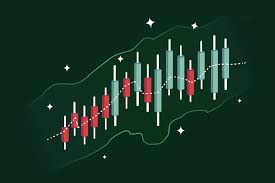Introduction
Altcoin trading can be highly rewarding but also incredibly volatile. To navigate these price fluctuations effectively, traders rely on technical indicators that provide insights into market trends, volatility, and potential entry or exit points. One such powerful tool is Bollinger Bands, which helps traders identify overbought and oversold conditions, market breakouts, and trend reversals.
Originally developed by John Bollinger in the 1980s, Bollinger Bands have become a staple in financial markets, including stocks, forex, and cryptocurrencies. In altcoin trading, where price swings can be extreme, using Bollinger Bands correctly can improve decision-making and maximize profit potential.
This article explores how Bollinger Bands work, their application in altcoin trading, trading strategies, and how traders can use them effectively to gain an edge in the market.
Understanding Bollinger Bands
What Are Bollinger Bands?
Bollinger Bands consist of three lines plotted over a price chart:
✔ Middle Band: A simple moving average (SMA), typically set at 20 periods, which represents the price trend.
✔ Upper Band: A line set two standard deviations above the SMA, representing an overbought level.
✔ Lower Band: A line set two standard deviations below the SMA, indicating an oversold condition.
These bands expand and contract based on market volatility. When price fluctuations increase, the bands widen; when volatility decreases, the bands tighten.
How Bollinger Bands Work in Trading
✔ When price touches the upper band, it may indicate that the asset is overbought, signaling a potential reversal or correction.
✔ When price reaches the lower band, it may suggest that the asset is oversold, presenting a possible buying opportunity.
✔ A breakout beyond the bands signals high volatility and potential trend continuation or reversal.
Applying Bollinger Bands to Altcoin Trading
1. Identifying Market Volatility
Bollinger Bands are excellent for measuring altcoin volatility. Since altcoins experience strong price swings, traders can use Bollinger Bands to detect periods of low or high volatility.
✔ Narrow bands (low volatility): The market is in consolidation, and a breakout may be imminent.
✔ Widening bands (high volatility): A strong price move is occurring.
Example:
If Ethereum (ETH) is trading within narrow Bollinger Bands for several days, a price breakout may soon follow, either upward or downward.
2. Using Bollinger Band Squeezes for Breakout Trading
A Bollinger Band Squeeze occurs when the bands tighten significantly, indicating reduced volatility and an impending breakout. Traders anticipate major price movements when the squeeze resolves.
✔ Breakout above the upper band signals a potential bullish continuation.
✔ Breakout below the lower band suggests a bearish trend formation.
Example:
If Binance Coin (BNB) is trading in a tight Bollinger Band squeeze, a breakout above the upper band confirms an upward move, leading to a potential long trade.
3. Trading Reversals Using Bollinger Bands
Bollinger Bands help traders spot trend reversals by identifying overbought and oversold conditions.
✔ Price touching the upper band in an uptrend may signal a potential pullback or reversal.
✔ Price hitting the lower band in a downtrend could indicate a buying opportunity.
Example:
If Ripple (XRP) repeatedly touches the lower Bollinger Band but fails to break lower, it may suggest buyer accumulation, signaling a potential price recovery.
4. Bollinger Bands and Trend Confirmation
✔ If an altcoin trades above the middle band, it suggests bullish momentum.
✔ If price stays below the middle band, the trend remains bearish.
Traders use the middle band as dynamic support or resistance to confirm trend strength.
Example:
If Cardano (ADA) continuously trades above the middle band while the bands expand, traders may hold long positions until a break below the middle band occurs.
Bollinger Bands Trading Strategies for Altcoins
1. Bollinger Bounce Strategy
This strategy assumes that price will bounce back when it reaches the outer bands.
✔ Buy when price touches the lower band and RSI confirms oversold conditions.
✔ Sell when price reaches the upper band in overbought conditions.
Best for: Range-bound markets where altcoins fluctuate within a defined price channel.
2. Bollinger Breakout Strategy
✔ Wait for a Bollinger Band squeeze.
✔ Enter a trade in the breakout direction once the price closes outside the bands with volume confirmation.
Best for: Identifying early breakout opportunities in altcoins with low volatility phases.
3. Bollinger Band and RSI Strategy
✔ Combine Bollinger Bands with Relative Strength Index (RSI) to confirm overbought or oversold conditions.
✔ If price hits the lower Bollinger Band and RSI is below 30, it signals a strong buy opportunity.
✔ If price touches the upper band and RSI is above 70, it suggests a sell signal.
Best for: Catching high-probability reversal trades in trending markets.
Pros and Cons of Bollinger Bands in Altcoin Trading
Pros
✔ Versatile indicator that works for all market conditions.
✔ Helps identify breakouts, reversals, and trends.
✔ Effective in spotting overbought and oversold levels.
Cons
❌ Not always accurate—false breakouts can occur.
❌ Requires additional confirmation indicators like RSI or MACD.
❌ Less effective in highly volatile markets with erratic price swings.
1. How do Bollinger Bands help in trading altcoins?
Bollinger Bands measure market volatility and help identify breakouts, trend reversals, and overbought/oversold conditions.
2. What does it mean when Bollinger Bands tighten?
A tight squeeze indicates low volatility and often precedes a strong price movement or breakout.
3. Can Bollinger Bands predict price trends?
While they don’t predict future prices, they help traders gauge momentum and market conditions.
4. How do I confirm a breakout using Bollinger Bands?
✔ Look for a candle closing outside the bands.
✔ Use volume indicators to confirm strong buying or selling pressure.
5. Do Bollinger Bands work for all altcoins?
Yes, but they are most effective for mid-to-high liquidity altcoins like Ethereum (ETH), Solana (SOL), and Binance Coin (BNB).
6. Should I use Bollinger Bands alone?
No. Combining them with RSI, MACD, or Moving Averages improves accuracy.
7. Can Bollinger Bands identify support and resistance levels?
Yes. The middle band acts as dynamic support/resistance, while the upper and lower bands mark key levels.
8. Where can I trade altcoins using Bollinger Bands?
Platforms like Finance Legend provide advanced charting tools for Bollinger Band analysis.
Conclusion
Bollinger Bands are a powerful tool for altcoin trading, helping traders identify volatility, reversals, and breakout opportunities. When combined with other indicators like RSI and volume analysis, they enhance trading accuracy and risk management.
For traders looking for advanced trading tools and strategies, platforms like Finance Legend provide the necessary resources to maximize profitability in altcoin trading. 🚀








